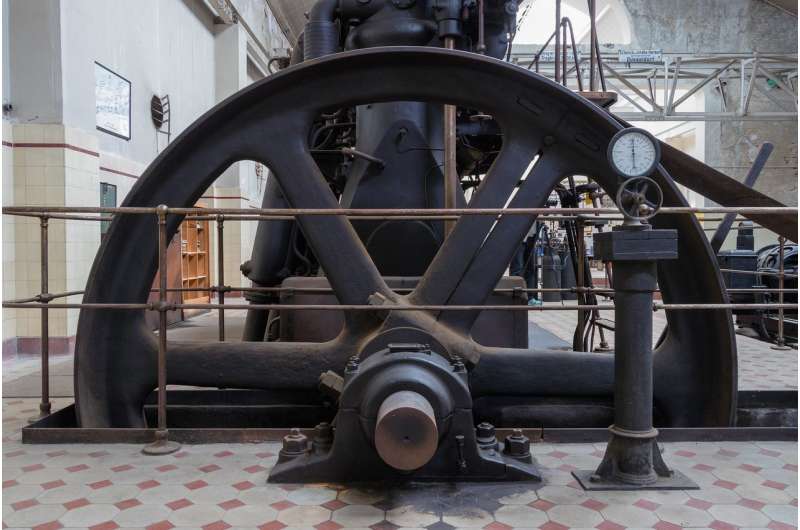Melting glaciers have a limited impact on Swiss hydropower production

A new study quantifies the effect of glacier retreat due to global warming on hydropower production. This detailed analysis of all Swiss water resources shows that only a small percentage is provided by glacier meltwater. Consequently, the reduction of these waters predicted for the end of the 21st century poses no threat to Swiss hydropower production.
For decades, glacier melt due to climate change has provided additional water for dams. According to glaciologists, glacier mass loss may even be accelerating. But this windfall for hydroelectric generation is unlikely to continue if society manages to slow global warming.
Now, a study led by Bettina Schaefli, holder of an SNSF professorship at the University of Lausanne, shows that fears of a threat to power generation are unfounded. For the first time, a comprehensive model of water flow into Swiss hydropower plants has quantified the contribution from glacier retreat. Since 1980, this has averaged 1.4 TWh per year, or 4 percent of the country's total hydropower output. This additional electricity generation is linked to the fact that melting glaciers lose more water than they take in from precipitation. The study is published in the journal Renewable Energy.
The evolution of glacier retreat during the 21sth century – based on projections of the Intergovernmental Panel on Climate Change (IPCC) – remains uncertain, but is expected to slow considerably between now and 2070–2090, provided measures are taken to counter global warming. This situation would reduce the production of electricity linked to glacier melt to roughly 0.4 TWh per year, says the study. The predicted decrease, around 1 TWh, corresponds to 2.5 percent of the electricity from hydropower sources foreseen by the government's Energy Strategy 2050.
"We have been able to quantify this change in a concrete way," says Schaefli. "Producers have expressed concern about a potential drop in production. Our model can help them to anticipate the future, in particular through regional forecasts. For example, they show that in Valais, power plants rely on glacier melt for 9 percent of their electricity. This would be reduced by half, but later than in other areas of the country owing to the high elevation of the dams and the size of the glaciers involved. All in all, our model offers the first comprehensive overview of the factors influencing the amount of water available for Swiss hydropower production."
93 percent of the Swiss territory supplies water to dams
The researchers have established a detailed map of all the catchment areas (the areas that supply watercourses) in Switzerland, from meadows measuring 1 km2 to areas a thousand times larger. The map shows that the water falling on 93 percent of the land area of Switzerland ultimately passes through at least one Swiss electric power plant. Some watercourses originating in the Bernese Oberland pass through 30 plants before leaving Switzerland via the Rhine at Basel. "It's an extremely efficient use of this source of renewable energy," says Schaefli.
The study consolidates numerous data sources: a history of glacier mass loss in Switzerland and a simulation of its future evolution (Matthias Huss, University of Fribourg and ETH Zurich), the flow of all Swiss rivers (FOEN), annual statistics on hydropower production (SFOE) as well as HydroGIS, a geographic database of all of Switzerland's hydropower facilities.
The research team also developed a very simple model for use by non-specialists. It is based on average production (the amount of electricity produced per cubic metre of water) of the six main regions of Switzerland that supply the power plants. It is proportional to the average elevation of the regions. This average production makes it possible to deduce the productivity of the power plants supplied by glaciers, as well as the effect of glacier retreat, which has been documented by glaciologists. The approach was verified by the comprehensive model, taking into account each catchment area and power plant in Switzerland.
"The slowdown in glacier melt will add to other projected losses in productivity, as those linked to the Water Protection Act, which governs renewal of concessions granted to dam operators," says Schaefli. "Our study shows that these two reductions are of the same order of magnitude and should be offset by the expansion of hydroelectric capacity envisaged by the Energy Strategy 2050."
This study represents a collaboration between the Universities of Lausanne, Fribourg and Zurich, EPFL, ETH Zurich and WSL. It was funded by the SNSF (through an SNSF professorship and an Ambizione Energy grant) and by the Swiss Competence Centre for Energy Research – Supply of Electricity (SCCER–SoE) administered by Innosuisse.
More information: Bettina Schaefli et al. The role of glacier retreat for Swiss hydropower production, Renewable Energy (2018). DOI: 10.1016/j.renene.2018.07.104
Journal information: Renewable Energy
Provided by Swiss National Science Foundation




















